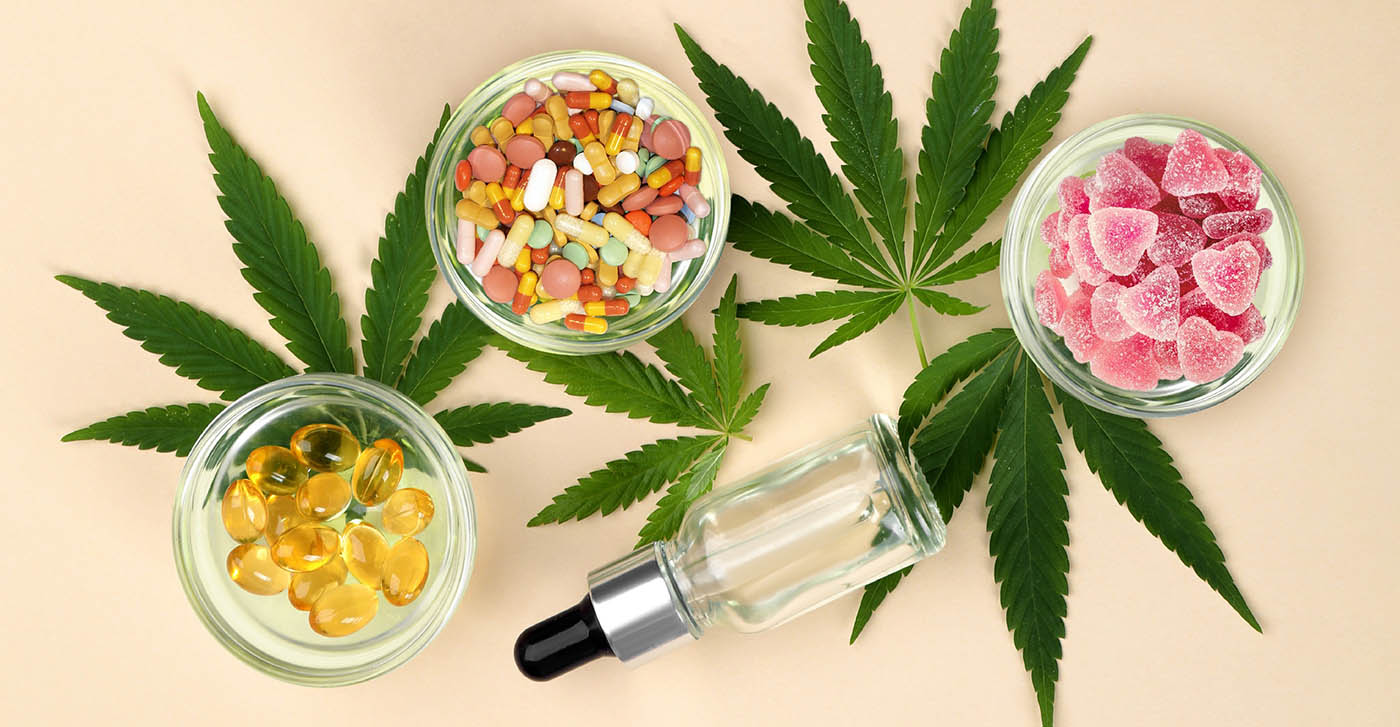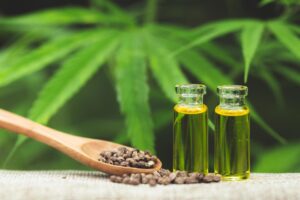In an era where climate change headlines dominate, the cannabinoids industry is stepping up with eco-friendly innovations that promise a healthier planet alongside wellness products. Derived from cannabis plants, cannabinoids like CBD and THC are booming, with the global market projected to reach $100 billion by 2028. But this growth comes with environmental costs—indoor cultivation alone accounts for massive energy use, equivalent to powering millions of homes. Enter sustainability: a movement transforming how cannabinoids are grown, extracted, and distributed. From reducing carbon footprints to embracing renewable resources, these changes aren’t just buzzwords; they’re essential for long-term viability. As consumers demand greener options, businesses are innovating to meet the challenge, proving that profitability and planet-friendliness can coexist.
Cultivating with Conscience: Sustainable Farming Breakthroughs
At the heart of the cannabinoids industry lies cultivation, traditionally resource-intensive. Indoor grows devour electricity for lighting and climate control, contributing to a U.S. carbon footprint of 7.4 to 10.2 million metric tons of CO2 annually from legal marijuana production. Innovators are shifting to outdoor and hybrid methods, slashing emissions by up to 90% compared to indoor setups. Water conservation is key; advanced drip irrigation and rainwater harvesting systems reduce usage by 50-70%, vital in drought-prone regions like California. Organic regenerative farming, using cover crops and compost, enhances soil health while avoiding synthetic pesticides. Hemp-derived cannabinoids, requiring less water than traditional crops, are leading this charge. Farms incorporating zero-waste practices recycle plant matter into biofuels or animal feed, closing the loop on resources. These methods not only lower environmental impact but boost yields—regenerative plots report 20% higher cannabinoid content through natural biodiversity.
Extraction Excellence: Eco-Conscious Processing Techniques
Once harvested, extracting cannabinoids demands innovation to minimize harm. Traditional solvent-based methods release volatile organic compounds, polluting air and water. Forward-thinking companies are adopting supercritical CO2 extraction, a clean process using pressurized carbon dioxide that’s recyclable and leaves no residues. This technique cuts energy use by 40% over older methods and produces purer products. Ethanol extraction from renewable sources like sugarcane offers another green alternative, biodegradable and efficient. Labs are integrating solar-powered facilities, reducing operational carbon by 60%. Biotechnology plays a role too: yeast-engineered cannabinoids, produced in fermenters like beer, bypass plant growth entirely, saving vast amounts of land and water. A single facility can output equivalents to thousands of acres, with 95% less environmental strain. These advancements ensure high-quality cannabinoids without the ecological debt, appealing to health-conscious users.
Packaging Progress: Wrapping Sustainability into Every Product
The cannabinoids sector generates tons of waste from single-use plastics, but sustainable packaging is revolutionizing this. Biodegradable materials from hemp fibers—ironically derived from the same plant—decompose in months, unlike petroleum-based plastics that linger for centuries. Compostable pouches and recycled glass jars are standard now, with innovations reducing packaging weight by 30% per unit, lowering transportation emissions accordingly. Edible inks and minimalistic designs cut ink pollution, while reusable containers encourage customer returns for refills. States like New York promote hemp-based packaging research, fostering circular economies. This shift not only curbs landfill contributions but enhances brand loyalty; eco-packaged products see 25% higher repeat purchases. As regulations tighten, these materials are becoming the norm, proving that thoughtful design can protect both product integrity and the environment.
Consumer Catalyst: Fueling the Eco-Demand Surge
Shoppers are the real drivers of change in the cannabinoids world. A 2024 survey revealed that 65% of cannabis consumers are willing to pay a premium for sustainably sourced items. This preference stems from growing awareness—millennials and Gen Z, comprising 70% of the market, prioritize ethics. Brands responding with transparent supply chains, like blockchain-tracked origins, build trust. The industry supports 425,000 full-time jobs in 2025, many in sustainable roles like green tech specialists. Certifications such as USDA Organic or Fair Trade amplify appeal, with certified products outselling non-certified by 35%. This demand loop encourages investment; venture funding for green cannabis tech hit $2 billion last year. Ultimately, consumers’ wallets are voting for a planet-positive industry, pushing laggards to adapt or fade.
Business Bloom: Integrating Sustainability in Sales Models
Sustainability extends to how cannabinoids reach users, with models like Cannabinoids Online, Cannabinoids Wholesale, and Cannabinoids White Label leading the eco-charge. Cannabinoids Online platforms curate eco-verified products, using carbon-neutral shipping and digital receipts to minimize waste. Virtual storefronts reduce physical inventory needs, cutting storage energy by 50%. For Cannabinoids Wholesale, bulk suppliers offer sustainable batches from regenerative farms, enabling retailers to stock green without premium costs—wholesale volumes grew 40% in eco-lines last year. Cannabinoids White Label services allow brands to customize sustainable formulations, from CBD oils to gummies, with private labeling on biodegradable packaging. This flexibility helps small businesses enter the market ethically, with white label eco-products capturing 25% market share. These models democratize access, ensuring sustainability scales from farm to consumer.
Horizon of Hope: Emerging Innovations and Challenges
Looking forward, the cannabinoids industry eyes breakthroughs like AI-optimized grows, predicting water needs to save 30% more resources. Nanotech-infused soils could enhance nutrient uptake, reducing fertilizer runoff. Lab-grown cannabinoids promise zero-land-use production, potentially revolutionizing supply. However, challenges persist: high upfront costs for green tech deter small operators, and inconsistent regulations hinder uniformity. Collaborative efforts, like industry associations promoting best practices, are crucial. By 2030, experts forecast 80% of production will be sustainable, driven by policy and innovation. This trajectory not only mitigates climate impact but positions cannabinoids as a model for other sectors.
Embracing a Sustainable Legacy
As the cannabinoids industry evolves, eco-friendly innovations are no longer optional—they’re imperative. From cultivation to consumption, these changes foster resilience, meet consumer expectations, and safeguard the earth. By prioritizing sustainability, the sector ensures its growth benefits all, paving a greener path for future generations.
Elevate your inventory with NanoHempTechLabs—pioneers in sustainable Cannabinoids Wholesale. Our regeneratively farmed, CO2-extracted CBD isolates, full-spectrum oils, and water-soluble nano-emulsions deliver 95% less environmental impact and 20% higher potency. Biodegradable packaging and blockchain-tracked origins ensure eco-credibility that drives 35% higher repeat sales. Join 400+ retailers scaling green profits with white-label-ready, USDA Organic-certified bulk solutions. Secure premium margins and planet-positive branding today.
Schedule a call with NanoHempTechLabs to lock in wholesale pricing and exclusive sustainability certifications. Let’s grow greener—together.
Reference:
- (2021). Unveiling the botanical versatility of cannabis sativa: a modern perspective on medicinal and industrial applications. PSR, 2(1), 1-6. https://doi.org/10.51470/psr.2021.02.01.01
- Ahmadi, F., Kallinger, D., Starzinger, A., & Lackner, M. (2024). Hemp (cannabis salvia l.) cultivation: chemical fertilizers or organic technologies, a comprehensive review. Nitrogen, 5(3), 624-654. https://doi.org/10.3390/nitrogen5030042
- André, A., Leupin, M., Kneubühl, M., Pedan, V., & Chetschik, I. (2020). Evolution of the polyphenol and terpene content, antioxidant activity and plant morphology of eight different fiber-type cultivars of cannabis sativa l. cultivated at three sowing densities. Plants, 9(12), 1740. https://doi.org/10.3390/plants9121740





